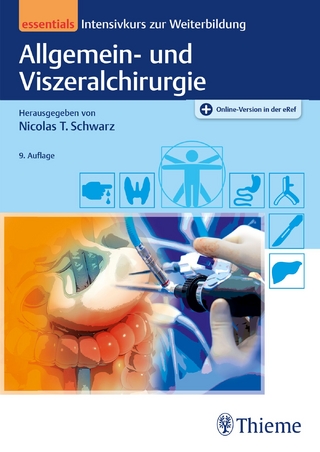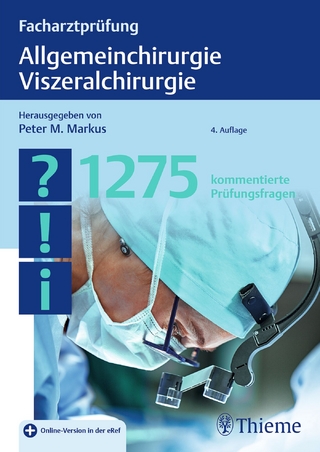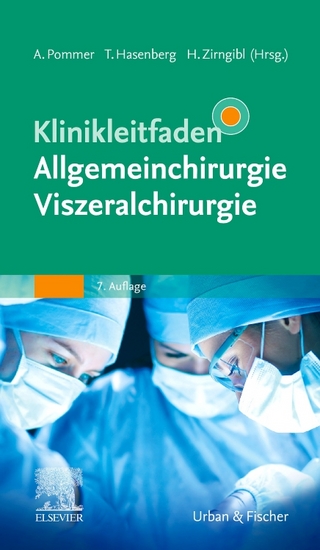Medical treatment and operative repair of abdominal aortic aneurysms
- Titel ist leider vergriffen;
keine Neuauflage - Artikel merken
During the last 60 years strong efforts have been undertaken to determine the best therapeutic options and to further reduce the risk of any of the operative strategies available today. This includes preoperative diagnostic steps, perioperative optimization of medical treatment and the choice of the most suitable operative approach, which might be either open surgery (OAR) or endovascular repair (EVAR/FEVAR). Aneurysm treatment will remain a team challenge and it mandates the highest level of the Rasmussen learning model: identification, analysis, planning, decision making, performance, feedback, problem analysis and solution.
This more practically than scientifically orientated textbook presents the different options and pitfalls of aneurysm treatment based on the current guidelines and recommendations derivable from recently published scientific papers, studies and multicentric studies.
1.Propaedeutics11
1.1.Epidemiology11
1.2.Natural history12
1.2.1.AAA expansion12
1.2.2.AAA rupture12
2.Division of AAA by its clinical appearance, diagnostic and therapeutic
pathways15
2.1.Clinical appearance: Ruptured Abdominal Aortic Aneurysm (rAAA)15
2.1.1.Clinical symptoms of rupture17
2.1.2.Clinical appearance: Symptomatic AAA17
2.1.3."Remote symptoms"17
2.2.Clinical appearance: Asymptomatic AAA17
2.3.Diagnostic steps and therapeutic pathways for aneurysm treatment18
2.3.1.Diagnostic imaging18
2.3.1.1.Ultrasound, Colour Coded Duplex, Contrast enhanced Ultrasound18
2.3.1.2.Contrast enhanced high resolution CT-scan18
2.3.1.3.MRT19
2.3.1.4.Angiography19
2.3.1.5.IVUS (intravascular ultrasound)20
2.3.2.Preoperative general risk evaluation20
2.3.2.1.Diagnostic steps for cardiac and pulmonary status evaluation21
2.3.2.2.Respiratory tract function21
2.3.2.3.Renal function21
2.4.Pathways for AAA treatment22
2.4.1.Ruptured aneurysms23
2.4.2.Treatment pathway for symptomatic AAA25
2.4.3.Treatment pathways for asymptomatic AAA25
2.4.4.Indication for conservative treatment25
3.Open Aneurysm Repair (OAR)29
3.1.Introduction29
3.2.Indications for OAR29
3.2.1.Decision making for or against OAR – What has to be taken into account?29
3.3.Basic aspects of OAR33
3.4.Anaesthesia for OAR33
3.4.1.OAR under epidural anaesthesia only34
3.5.Choice of the surgical incision35
3.5.1.Advantages of the different approaches35
3.5.2.Description of a standardized operative procedure36
3.6.Techniques for aortic replacement39
3.7.Specific considerations41
4.Endovascular Aneurysm Repair (EVAR)47
4.1.Introduction47
4.2.Technical aspects and differences of endografts (presentation of different devices)47
4.3.Graft fixation mechanisms48
4.4.Introducer systems48
4.5.The standard procedure50
4.5.1.Basic equipment50
4.5.2.Procedural steps54
4.6.EVAR and anaesthesia60
4.6.1.Aims of anaesthesia61
4.6.2.Technical aspects of local anaesthesia62
4.6.3.Conscious sedation63
4.6.4.Excemptions for LA63
4.7.Access for EVAR63
4.7.1.Choice of Anaesthesia64
4.7.2.Choice of surgical exposure technique64
4.7.2.1.Surgical exposure of the common femoral artery for EVAR64
4.7.3.Minimal invasive surgical approach65
4.7.4.Percutaneous techniques66
4.7.4.1.Fascial Closure Technique (Fascia lata technique)66
4.7.4.2.Percutaneous Access with Pre-closure technique (Prostar XL® Technique)66
4.7.4.3.Ultrasound guided puncture68
4.7.5.Additional access sites70
4.7.6.Complete thrombotic occlusion71
4.7.7.Adverse events in surgical exposure72
4.7.8.Adverse events using the fascial closure technique72
4.8.Specific Considerations – EVAR in severely angulated anatomies73
4.8.1.Complications related to inappropriate use of devices73
4.8.2.Angulation as reason for procedure failure74
4.8.3.Device and design characteristics76
4.8.4.Synopsis of device related data76
4.9.Conclusions drawn77
5.Complex EVAR: fenestrated or branched EVAR79
5.1.Introduction79
5.2.FEVAR (fenestrated EVAR)80
5.2.1.Principles and definition of FEVAR80
5.2.2.CE-marked fenestrated grafts80
5.2.3.Indications for fenestrated devices80
5.2.4.Requirements for FEVAR81
5.2.5.Implantation technique82
5.2.6.Postoperative treatment and follow-up83
5.2.7.Custom made fenestrated and branched devices84
5.2.8.Preoperative imaging and planning86
5.3.Specific considerations88
5.3.1.Bridging devices88
5.3.2.Decision making: fenestrations or branches – limitations88
5.3.3.Complications in the short and long term follow-up period:90
5.4.Alternative techniques91
5.4.1.Complications after Chimney93
6.Specific considerations concerning aneurysm repair, complications and
their management97
6.1.Renal function and AAA treatment97
6.1.1.CIN: Contrast Induced Nephropathy97
6.1.1.1.Definition of CIN and its pathophysiology97
6.1.1.2.Risk factors for CIN98
6.1.1.3.Differential diagnosis of CIN98
6.1.1.4.Strategies for the prevention of CIN98
6.2.Tools and tricks for reduction of contrast use in EVAR99
6.2.1.Imaging quality99
6.3.Alternatives for intraoperative imaging without iodinated contrast media100
6.3.1.IVUS100
6.3.2.Procedure related use of contrast100
6.3.3.Carbondioxide100
6.3.4.The role of CT in the current Follow-up regimen after EVAR100
6.3.5.Postoperative drug regimen101
6.3.6.Operative techniques to reduce CM use during EVAR101
6.3.7.Imagefusion101
6.4.Prevention regimen101
6.5.Preservation of renal function in EVAR102
6.5.1.Renal function and follow-up102
6.5.2.Multislice high resolution CT-scan102
6.5.3.CEUS (contrast enhanced ultra sound) for EVAR follow-up102
6.5.4.Technical reasons for renal failure and renal function deterioration in EVAR102
6.6.Renal function impairment in OAR104
6.6.1.Mural thrombus104
6.7.Nephrogenic systemic fibrosis (NSF)106
6.7.1.Pathophysiology of NSF106
6.7.2.NSF and renal function106
6.7.3.Gadolinium and fibroblasts stimulation106
6.7.4.Therapeutic options to prevent and treat NSF107
Index109
| Erscheinungsdatum | 27.09.2017 |
|---|---|
| Reihe/Serie | UNI-MED Science |
| Verlagsort | Bremen |
| Sprache | englisch |
| Maße | 176 x 246 mm |
| Gewicht | 351 g |
| Themenwelt | Medizinische Fachgebiete ► Chirurgie ► Viszeralchirurgie |
| Medizin / Pharmazie ► Medizinische Fachgebiete ► Radiologie / Bildgebende Verfahren | |
| Schlagworte | Abdominal Aortic Aneurysms • Aneurysm • Aneurysm Treatment |
| ISBN-10 | 3-8374-1548-1 / 3837415481 |
| ISBN-13 | 978-3-8374-1548-3 / 9783837415483 |
| Zustand | Neuware |
| Haben Sie eine Frage zum Produkt? |
aus dem Bereich




